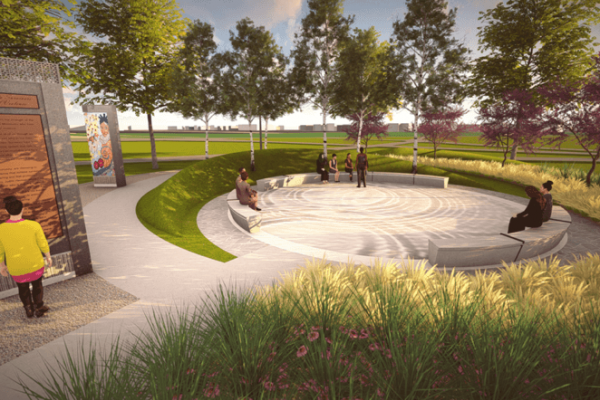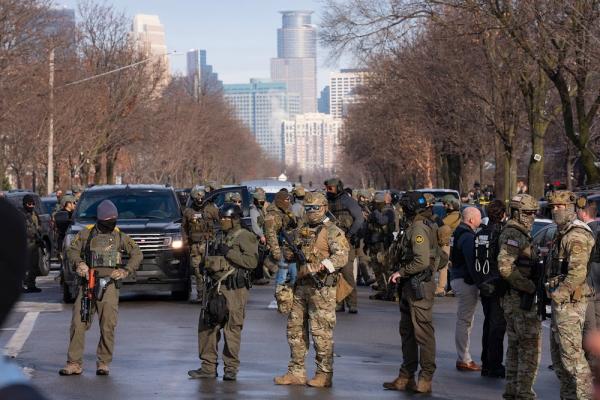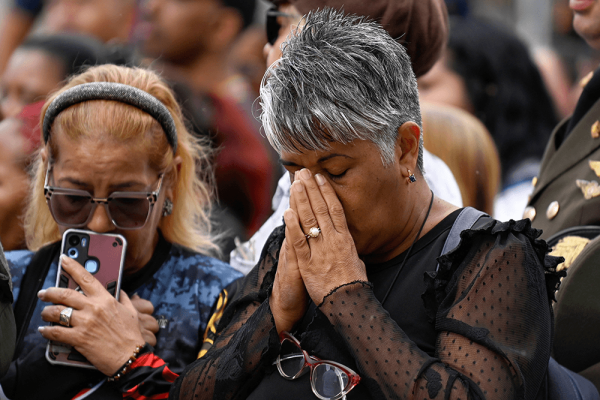Editors note: Minneapolis made history yesterday by breaking ground on what will become the nation’s first permanent memorial to sexual violence victims/survivors. The memorial will feature walkways and benches encircling a ripple effect art piece, representing “the multiplying power of breaking the silence.” The memorial, which will rest along the Mississippi River at Boom Island Park, will also feature various original mosaics to symbolize “that even broken pieces can be put together to create something whole and beautiful.” Community organizer and survivor Sarah Super began this project in 2015. Below is an excerpt from the speech Super shared at the historical Survivors Memorial Groundbreaking Ceremony, edited lightly for context and clarity:
Good morning, and thank you so much for joining us on this momentous occasion. I launched this initiative only weeks after my ex-boyfriend broke into my apartment and raped me. In the days following my assault, I told only a few people what had happened to me. And I was stunned when so many of those few people responded saying, "Me too."
When I chose to go public with my story and identify myself as the victim of Alec's crime, I heard from hundreds more survivors. They told me stories that disturbed me to my core. But despite the tidal wave of responses from fellow survivors, the vast majority of people I knew said and did nothing in response.
It made me feel as though people didn't care, that what had happened to me in real life was "too much" for them to talk about, that healing from rape was my responsibility alone, a "pull yourself up by your bootstraps" mentality. I felt isolated — the total opposite of what is needed in the wake of sexual assault ... In 2015, I felt like I was drowning in rape culture, and there were too few people saying anything about it.
Survivors will never interpret silence as support. Silence supports the perpetrators and never the victims. This silence — this lack of acknowledgement, validation, action and engagement — is a source of deep pain for survivors of sexual violence.
Many of those who had remained silent when I first disclosed my story have shared with me that they didn't know what to say or what to do. In fear of saying or doing the wrong thing, they said and did nothing. What we know now is that saying and doing nothing is the wrong thing.
Survivors deserve a response, and we deserve that response to be validating, compassionate, trauma-informed, and victim-centered. We deserve this response on every level: from the individuals in our lives to the organizations and systems we engage with and participate in.
This memorial is a community response to sexual violence, rape culture, and injustice. It will be a place for truth-telling, a place that validates our experiences, our suffering, and our courage. Together, we are creating a permanent, public, beautiful symbol of solidarity with victims/survivors.
Dr. Judith Herman, who first named the lack of monuments for victims of sexual violence, starts her book, Trauma and Recovery, with the following:
"The ordinary response to atrocities is to banish them from consciousness. Certain violations of the social compact are too terrible to utter aloud: This is the meaning of the word unspeakable. Atrocities, however refuse to be buried. Equally as powerful as the desire to deny atrocities is the conviction that denial does not work."
By building a permanent memorial, we are refusing to let the truth be buried. The memorial will live above the surface for years and years to come. May it be a symbol of our commitment to bear witness to these atrocities and to honor the victims/survivors.
Learn more about the memorial and the team behind it at survivorsmemorial.org. Watch the speech in full on the Break the Silence Day Facebook page.
Got something to say about what you're reading? We value your feedback!







